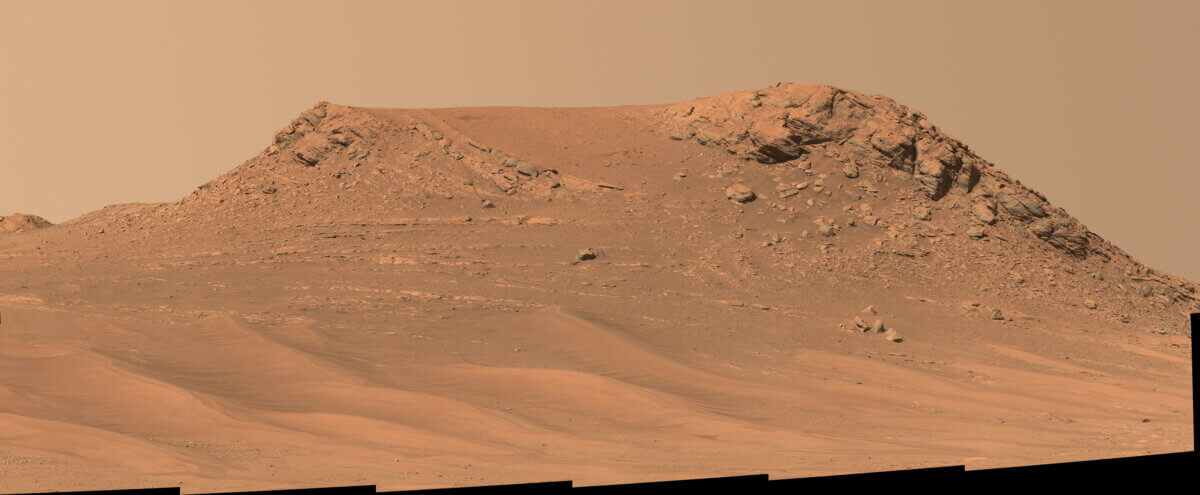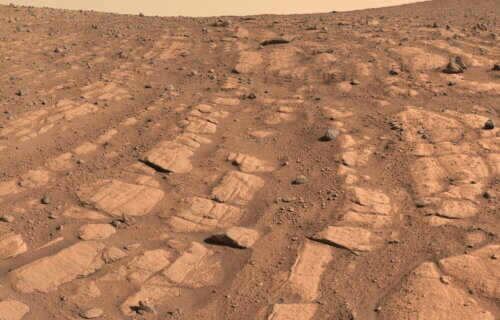PASADENA, Calif. — Scientists have recently uncovered evidence that suggests a massive river, comparable to the Mississippi here on Earth, once flowed on Mars. These conclusions come from the examination of rocks seen in recent images from the Red Planet, which appear to have been shaped by a powerful, swift-moving river.
“Those indicate a high-energy river that’s truckin’ and carrying a lot of debris. The more powerful the flow of water, the more easily it’s able to move larger pieces of material,” says Libby Ives, a postdoctoral researcher at NASA’s Jet Propulsion Laboratory in Southern California, which operates the Perseverance rover that is exploring Mars, in a media release.
The conjectured river was a component of a waterway network that streamed into Jezero Crater. This area has been the focus of the rover’s exploration since its landing more than two years ago. Scientists are now engaging in discussions regarding the type of powerfully flowing water that formed the curves observed on these rocks, based on the “first of its kind evidence” captured by NASA’s Perseverance Mars rover.
Some hypothesize that the curved formations could be the result of a river similar to the Mississippi, which winds snakelike across the landscape. Alternatively, they might have been shaped by a braided river like Nebraska’s Platte, known for creating small islands of sediment called sandbars.

A comprehensive mosaic was constructed of a location affectionately dubbed “Skrinkle Haven” using the rover’s Mastcam-Z camera between Feb. 28 and March 9, 2023. “Skrinkle Haven” offers the clearest example of these curved rock layers – termed “the curvilinear unit” – which until now had only been observed from space.
“We do see deposits like this on Earth, but they’re never as well exposed as they are here on Mars. Earth is covered in vegetation that hides these layers,” says Michael Lamb of Caltech, a river specialist and Perseverance science team collaborator.
The constructed mosaic consists of 203 individual images, stitched together after transmission from Mars. The result is a natural color view, approximately depicting the scene as it would appear to an average person were they standing on Mars.
Upon observation from the ground, the curved layers are organized in rows and seem to undulate across the landscape. They might be remnants of a river’s banks that shifted over time or traces of sandbars that formed in the river. Initially, these layers were likely much taller; scientists surmise that these sediment mounds, after hardening into rock, were eroded by wind over the course of eons, gradually whittling down to their present size.
Arizona State University directs the operations of the Mastcam-Z instrument, working in conjunction with Malin Space Science Systems in San Diego on the design, fabrication, testing, and operation of the cameras, and alongside the Niels Bohr Institute of the University of Copenhagen on the design, fabrication, and testing of the calibration targets.
A principal objective for Perseverance’s mission on Mars is astrobiology, encompassing the search for signs of ancient microbial life. The rover will characterize the planet’s geology and past climate, pave the way for human exploration of Mars, and be the first mission to gather and cache Martian rock and regolith, or broken rock and dust.
“What’s exciting here is we’ve entered a new phase of Jezero’s history. And it’s the first time we’re seeing environments like this on Mars,” says Perseverance’s deputy project scientist, Katie Stack Morgan of JPL. “We’re thinking about rivers on a different scale than we have before.”
Subsequent NASA missions, in cooperation with ESA (European Space Agency), plan to launch spacecraft to Mars to collect these sealed samples from the surface and return them to Earth for comprehensive analysis.
South West News Service writer Dean Murray contributed to this report.
You might also be interested in:
- Doorway on Mars? Photo by NASA rover stirs curiosity online
- Another Mars mystery: Scientists discover strange circles on the Red Planet
- Mars is still alive? Here’s why underground lava may explain massive Marsquakes

